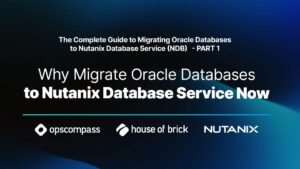Nathan Biggs (@nathanbiggs), CEO
I hope that you will indulge a personal retrospective in this post. Just moments ago, my daughter looked on her iPhone and gasped as she read the news that Steve Jobs had passed away. For a family as committed to the Apple ecosystem as we are, the announcement took us all by surprise. It was almost like losing a family friend. Of course, I never met Steve Jobs, but his impact on my career has been profound. His passing has caused me to reflect on just how much my career has been intertwined with Apple’s iconic visionary.
It was in the spring of 1984 that I first had a glimpse of an Apple Macintosh computer. I was in my senior year of high school, and in the school’s inaugural computer science class. My friend, Bryan and I had the opportunity to go to the office where it was being demonstrated. I was not sure what to think. The person doing the demo pushed it as a tool for making banners and other WYSIWYG functions. I fancied myself a programmer, not a banner publisher, and so that function did not initially appeal to me. What was fascinating though was the idea of a mouse and movable pointer. I immediately went to work on programming my Commodore 64 with the joystick pointer to see if I could mimic the functionality.
Bryan and I spent the next two years in missionary service—Bryan in Japan, and I in Korea. We both came back to Arizona to pursue a college education, but the entreprenuerial bug bit both of us. We decided to launch a Japanese/Korean translation service called Trans-Pacific Mediation. This was my first business venture since selling eggs from our chickens door-to-door as a kid. I read about these two college students that had started Apple Computer in California, and just knew that if they could launch something then so could we. Bryan and I decided to focus on hotels in the Phoenix area for selling our translation services. We offered to translate and produce business cards, menus, signs, etc. One of our challenges was finding a computer that could produce print-quality materials in English, Japanese, and Korean. Remembering our first experience with a Mac, we knew that is what we needed. I took $3,000 out of savings, and with a student discount, purchased my first Macintosh computer—a Mac SE with a 20MByte hard drive.
Trans-Pacific Mediation did not last long (my first, but not last hard lesson in the requirement that a business be adequately funded to even have a chance). The business reason for buying the Mac went away, but it was too late…I was hooked. Since that time, over 20 years ago, I have purchased 13 more Macs, ranging from the original iMac, to Mac Minis to PowerBooks, and MacBook Pros. None of the subsequent Macs cost as much as my very first Mac SE. I have never purchased a Windows computer (unless you count the iMac that came with Windows for dual-boot).
I went to Arizona State University and entered the Computer Systems Engineering program. I had two options for my course of study, an Intel path where we would learn the 8086 family of processors, or the Motorola path where we studied the 68xx processors. Of course, as a newly converted Mac addict, I was just sure that the 68000 processor in my Mac SE had to be better than what Intel was doing at the time, so I took the Motorola path. That was not the most popular choice. MS-DOS, and soon to follow versions of Windows were staking out a dominant position in the industry. My trusty Mac was right there with me though. While other students were spending countless hours in the lab, I was able to use my modem to dial in to the school’s Vax and do my programming from home. While other students produced their programming code onto green and white folded dot matrix paper, I was publishing mine on a laser printer with headers and footers. I don’t know if it got me any better scores (probably not), but I liked the professionalism that the Mac allowed me to convey.
While I was in school at ASU, I was able to pick up an internship at Microchip Technology in Chandler, AZ. They were looking for an engineering student that knew how to use a Macintosh to produce technical documentation. Once I graduated, I got my first job as an engineer at Microchip. My devotion to the Macintosh followed me throughout my tenure at Microchip, even though they were dark times for Apple.
During Steve Jobs’ absence from Apple Computer in the 90’s, I became an Evangelista (you would have to have been there to know). I followed Guy Kawasaki and the faithful few who knew that Apple had a better platform, and Bill Gates must have done something underhanded in getting Windows out there so prevalently. Guy Kawasaki was Apple’s Chief Evangelist. A title that I insisted on for House of Brick’s Dave Welch (which he has subsequently adopted emotionally, even if only on paper before).
Steve Jobs, and now Guy Kawasaki were my emotional mentors when it came to technology and entrepreneurship. I moved to Nebraska by connecting to the (new) Internet and finding a job on Careerlink.org. I became an owner of a software development company called Priority Technologies. It was there that I got my first iPod. A click wheel unit with 10GBytes of hard drive space for $500. I have bought countless iPods since then, but none as small in capacity, large in size, or as expensive as the first.
Now as CEO at House of Brick, I have started to make headway in the proliferation of Apple products. We have become avid iPad users, and are now getting more people requesting iPhones. My family has ditched cable in favor of Mac Minis on all our HD TVs, streaming iTunes, Netflix, and Hulu.
Through all these years, at every major decision point that I have encountered in my career, an Apple product has been there seemingly enabling or influencing my decision. I have taken courage as I saw Steve Jobs overcome and face his own career and life challenges. I have fancied myself as a Jobs-like visionary in the limited scope of my own pursuits. Even if I do not have the same visionary outlet as Steve has nurtured in creating the Apple ecosystem, I patterned myself technically, creatively, and entrepreneurially after his determination and drive. I saw how the iCEO revolutionized computing with the iMac, music with iTunes and the iPod, mobile phones with the iPhone, and last but not least, a whole new compute paradigm with the iPad.
The industry will go on in the coming days, weeks, and even years about how Steve Jobs has made such a huge impact on society. Everything they say will be right on about his life-changing vision. For me though, Steve Jobs has had a real and lasting impact on me personally and professionally. I feel a real sense of loss at Steve’s passing. Not because I knew him, but because he has been there with me at every step of my career.






